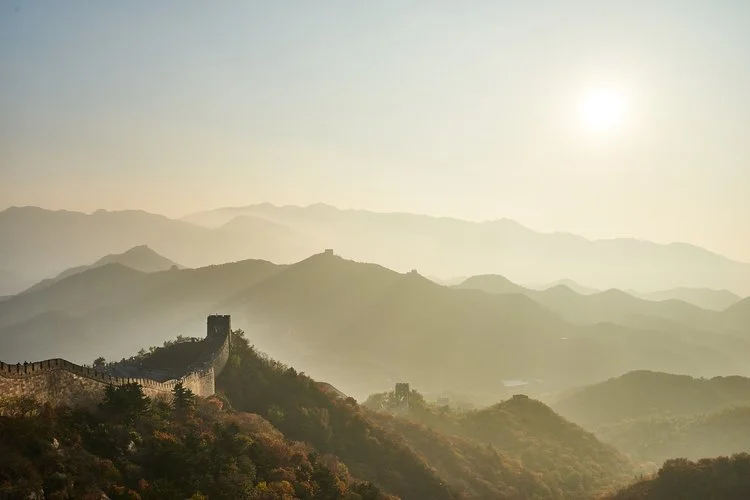China is an expansive country full of great diversity. Although a trip to China is always a good idea, the variety of weather from region to region means you’ll need to do your research when deciding when to visit. Hong Kong down south sees different weather than Beijing up north, and planning your trip depends on where you plan to explore. Keep reading to learn the best time to visit China!
Fall (September-November)
Fall is considered one of the best times to visit China. The country as a whole sees milder temperatures, making for more comfortable travel conditions. In September, the weather is generally still warm but nothing compared to the suffocating heat of the summer months. Now’s the time to sightsee anywhere in the country. Touring the Silk Route is ideal in the fall because temperatures drop quite a bit out west, giving travelers the perfect window for exploration before snow encroaches. The first week of October is a national holiday known as Golden Week. It’s best to avoid travel during this time as everyone in the country gets the week off—that’s over a billion people! It’s a very popular time for domestic tourism and everywhere will be extremely crowded.
After Golden Week, October is a great time to visit. This is when the leaves begin to transform into shades of fiery red, burnt orange, and golden yellow. If you’re an outdoor lover and the idea of gazing upon the gorgeous foliage appeals to you, then consider visiting in November. This is when the fall scenery is truly at its peak, and you’re likely to encounter few crowds. This is the perfect time for those who don’t mind the chill, as winter starts to make its presence known with invigorating, crisp air and temperatures continuing to drop.
Winter (December-March)
Winter in China can be harsh, especially up north. Temperatures drop very low in places such as Beijing and Xi’an. However, if you’re accustomed to the cold, this could be a good time to visit Beijing; it’s the low season, so you’ll be able to find good deals and have all the top sites to yourself. Snow is possible, and out west the temperatures are excruciatingly cold—exploring here is not recommended at this time. Down south, temperatures are not quite as frigid, but the dampness makes it feel much cooler than what the thermometer says. As January and February roll around, colder temperatures and more snow are the norm. Cities up north, such as Beijing, Pingyao, and Harbin look breathtaking under a blanket of snow. Harbin even transforms into a resort town, perfect for those longing for a winter wonderland. Although the Great Wall of China may be a photogenic sight, it’s not advised to trek the pathway because snow and icy conditions make for a treacherous journey. If you’re not a fan of the cold, head down south to Hong Kong, Hainan, or southern Yunnan for warmer weather. In late January or early February, the Chinese New Year rolls around. Crowds will increase, but if that doesn’t deter you, consider a trip at this time. It’s an unforgettable experience full of celebration that’ll give you an authentic look into Chinese culture. In March, temperatures begin their ascent, and fruit trees start to bloom. Although not as iconic as in Japan, the Chinese cherry blossoms are still a spectacular sight.
Spring (April-May)
Along with fall, spring is considered the best time to visit China. In April, rain showers begin to plague the central and southern regions, but temperatures are pleasant. This rain isn’t necessarily a bad thing, though, as it transforms the landscape into a lush oasis; cherry blossoms come into full bloom, and the hillsides are vibrant hues of green. This is an ideal time to visit any of the major cities, from Shanghai to Guangzhou to Tianjin. For those who hate the rain, stick to traveling up north (such as Beijing and Xi’an), where conditions are much drier. May is viewed as the best month for travel, but the first few days are a national holiday. Hold off on visiting until the second week of May to avoid large crowds.
Summer (June-August)
With the summer months comes scorching temperatures and unending rain. It’s wet throughout the country, but especially in the east and south. In June, the heat, humidity, and rain are just getting started. This is the best time to visit the iconic Longji Rice Terraces, which are beautifully irrigated and verdant thanks to the constant downpour. In July and August, typhoon season hits the southeast (Hong Kong). During this time, the north and south see the same climatic extremes, with temperatures rising to 100 degrees and intense humidity levels in both regions. The heat makes touring many of the top attractions unfeasible, but the summer does have some bright spots. The climate is cooler in mountainous areas, such as Yunnan, and it’s a great time to hike in the area. The northeastern region has average temperatures in the mid-80s, making it a pleasant time to stay in Harbin. And those who dream of a tropical paradise should head down to the southern island of Hainan—the ultimate beach destination!





